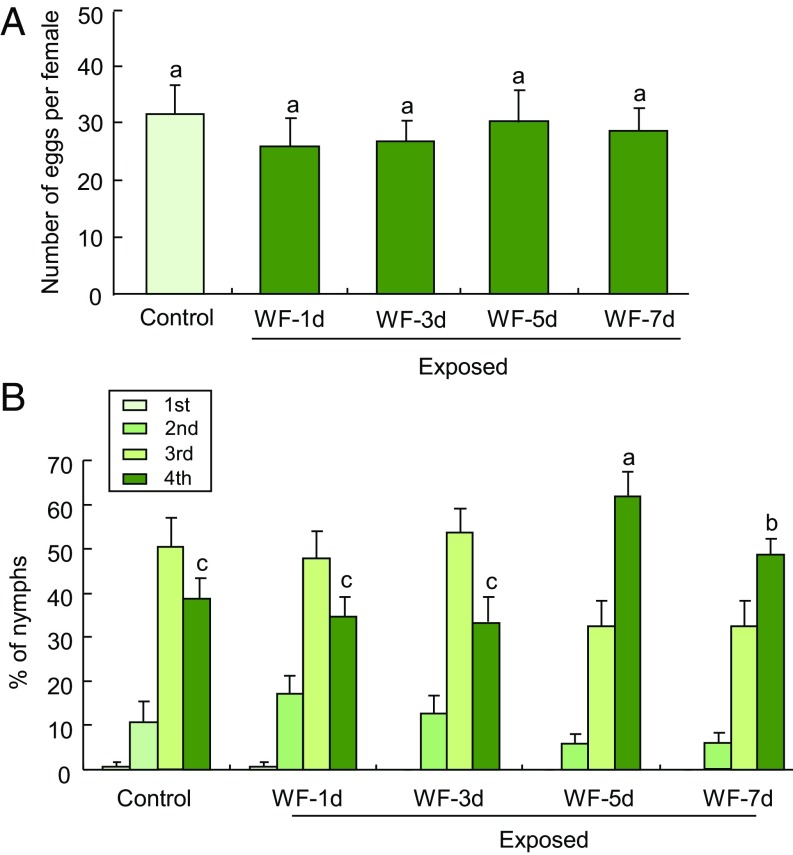Fig. 1.
Performance of whiteflies on volatile-exposed tomato plants. (A) Number of eggs laid per female after adults had been introduced on plants for 6 d (n = 10). (B) Percentage of nymphs represented by each instar at 21 d after adults had been added to exposed plants (n = 10–12). Control represents plants that had been exposed for 24 h to the volatiles from undamaged plants; WF-1d, WF-3d, WF-5d, and WF-7d represent the plants that had been exposed for 24 h to the volatiles from plants that had been infested with B. tabaci for 1, 3, 5, or 7 d, respectively. Error bars correspond to SEs. Different letters above bars indicate significant differences between treatments (P < 0.05; for A, Tukey’s multiple comparison test; for B, likelihood ratio test). B presents data for all four nymphal instars, but because the data for the different instars are dependent, we only used the percentage of nymphs that had reached the fourth instar for statistical analyses. The higher the proportion of fourth-instar nymphs found on a plant, the more suited that plant is for whitefly development.

